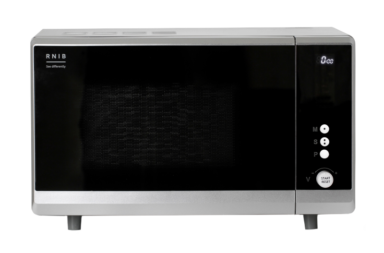If you’re involved with caring for
What
Both telecare and telehealth enable people to remotely monitor data indicating either environmental or health factors – relating to wellbeing.
Personal alarms
These are likely to be ‘wearables’ such as a pendant or bracelet and are used to trigger an alarm in an emergency. A base unit in the home passes on the alert to a call centre or family member, for example. (The same principle exists as a pull cord option for when people aren’t wearing the alarm, such as in the bathroom or bedroom.)
Falls
The risk of falls is among the most frequent reasons for a person to have to leave their home for residential care. According to the
Positional sensors
Carers of people with conditions that see them wander away from home are mindful of the potential risks. Sensors on doors can help monitor if people have left the building and how long they’ve been gone for – and can also be rigged up for certain times of day or night only, or to alert when the door has been left open. (Specially designed shoes can even carry GPS devices enabling carers to keep track of peoples’ movements if the user goes
missing.)
Bed/chair occupancy sensors work in a very similar way, alerting the call centre or carer if a person has been vacant for an unusual length of time or at a strange time of day or night.
Epilepsy sensors
Telecare and telehealth can overlap. Sensors can be placed under foam mattresses that can distinguish the hallmarks of a seizure.
Incontinence sensors
Incontinence can be uncomfortable and distressing. Simple sensors within pads placed under the sheets can detect dampness and alert carers.
Medication management
A medication management system can really help people to retain independence in handling their own medication – without other people having to drop by to ‘make sure’ they’ve done it properly.
Systems can give handy reminders to take doses – and prevent accidentally double-dosing. Units can be obtained that dispense medication at set times and send through a note to carers if they haven’t been ‘taken’ in a set time frame.
Environmental sensors
Sensors that detect fire, flood water or a gas leak can be linked to telecare systems that alert carers – and shut off the gas supply, for example.
Temperature sensors can also be useful, suggesting the presence of
Telehealth
Again, wearable devices have made monitoring and recording health data easier than ever. Information such as
More acute equipment can monitor symptoms/signs associated with very specific conditions, such as oxygen saturation for people with respiratory or pulmonary conditions or glucose monitors for people with diabetes.
Availability
So much information can now be managed through apps that telecare and telehealth systems are now available to an increasing number of people – and enabling their independence (and peace of mind for those that care for them).
Telehealth apps can be sourced from the usual sources such as the App Store or Google Play and an increasing number of organisations connected with disability care have launched their own as well.
More telecare and telehealth resources
Telecare Services Association (TSA)
The TSA website lists member organisations in your area.



